News Archive
Filter By
- Abyssinian ground hornbill
- Addax
- Aldabra tortoise
- Allen's swamp monkey
- Alpaca
- American alligator
- American avocet
- American bison
- American flamingo
- American wigeon
- Andean bear
- Aquatic caecilian
- Arapaima
- Asian elephant
- Asian small-clawed otter
- Asian water dragon
- Australian snake-necked turtle
- Bald eagle
- Baltimore oriole
- Barred owl
- Bearded emperor tamarin
- Beaver
- Bennett's wallaby
- Binturong
- Black-and-white ruffed lemur
- Black-and-white warbler
- Black-crowned night heron
- Black-footed ferret
- Black-tailed prairie dog
- Black-throated blue warbler
- Blue-billed curassow
- Blue crane
- Bobcat
- Brown pelican
- Bufflehead
- California sea lion
- Canvasback
- Cedar waxwing
- Channel catfish
- Cheetah
- Chicken
- Chinese alligator
- Chinese three-striped box turtle
- Clouded leopard
- Collared brown lemur
- Common raven
- Common yellowthroat
- Corals and sea anemones (anthozoa)
- Cow
- Crocodile monitor
- Cuban crocodile
- Dama gazelle
- Degu
- Dunlin
- Eastern indigo snake
- Eastern newt
- Eastern red-backed salamander
- Eastern screech-owl
- Eld's deer
- Electric eel
- Emperor newt
- Fennec fox
- Fishing cat
- Gaboon viper
- Geoffroy's marmoset
- Gharial
- Giant leaf-tailed gecko
- Giant panda
- Goat
- Golden-headed lion tamarin
- Golden lion tamarin
- Gray seal
- Gray wolf
- Green tree python
- Grevy's zebra
- Guam kingfisher (sihek)
- Guam rail (ko’ko’)
- Guinea pig
- Harbor seal
- Hartmann's mountain zebra
- Hawk-headed parrot
- Hellbender
- Home's hinge-back tortoise
- Hooded crane
- Iranian fat-tailed gecko
- Japanese giant salamander
- King vulture
- Komodo dragon
- Kori bustard
- Kunekune pig
- Land hermit crab
- Larger Malay mouse-deer
- Lemur leaf frog
- Lesser hedgehog tenrec
- Lesser kudu
- Linné's two-toed sloth
- Lion
- Loggerhead shrike
- Long-tailed chinchilla
- Long-tailed salamander
- Maned wolf
- Meerkat
- Miniature donkey
- Naked mole-rat
- North American porcupine
- North American river otter
- Northern Luzon giant cloud rat
- Northern pintail
- Northern red salamander
- Northern snakehead fish
- Northern tree shrew
- North Island brown kiwi
- Norway rat
- Orangutan
- Orchard oriole
- Ossabaw Island hog
- Ostrich
- Ovenbird
- Pallas's cat
- Panamanian golden frog
- Patagonian mara
- Persian onager
- Philippine crocodile
- Prehensile-tailed porcupine
- Prevost's squirrel
- Przewalski's horse
- Pygmy slow loris
- Red-crowned crane
- Red-fronted lemur
- Red-rumped agouti
- Red-winged blackbird
- Red knot
- Red panda
- Red River hog
- Red ruffed lemur
- Red wolf
- Ring-tailed lemur
- Ruddy duck
- Schmidt's red-tailed monkey
- Scimitar-horned oryx
- Screaming hairy armadillo
- Semipalmated plover
- Semipalmated sandpiper
- Siamang
- Sitatunga
- Sloth bear
- Southern lesser galago
- Southern swamp sparrow
- Southern tamandua
- Spider tortoise
- Striped skunk
- Swainson's thrush
- Tanagers
- Tentacled snake
- Tiger
- Titi monkey
- Turkey
- Twig catfish
- Vietnamese mossy frog
- Virginia opossum
- Von der Decken's hornbill
- Western lowland gorilla
- White-cheeked gibbon
- White-faced saki
- White-naped crane
- White-nosed coati
- Whooping crane
- Yellow-breasted chat
Displaying 351 - 375 of 2360 articles.

Meet Red Pandas Asa and Chris-Anne
Get to know our red pandas’ personalities and insider tips on the best times to spot them from Asia Trail keeper Mariel Lally.
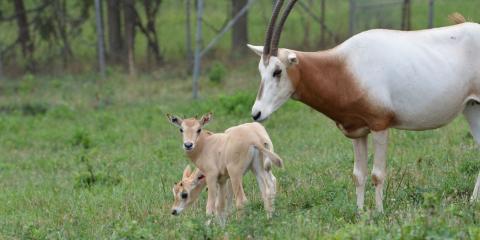
Favorite Fall Moments With Onagers and Oryx
Have you herd . . . our Persian onager filly and scimitar-horned oryx calves are exploring their surroundings! Get the latest update on their adventures from Tara Buk, Smithsonian Conservation Biology Institute animal keeper.
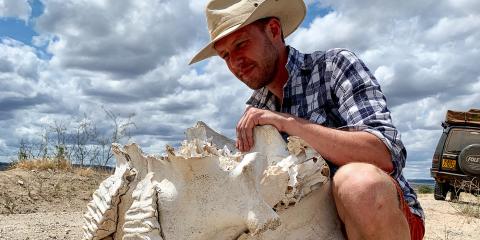
Smithsonian Global Health Veterinarian Is Runner Up for 2021 Nature Research Award for Driving Global Impact
Dr. James Hassell, wildlife veterinarian, epidemiologist and Keller Family Skorton Scholar for the Smithsonian Conservation Biology Institute’s Global Health Program was selected as the runner up on Nov. 30 for the 2021 Nature Research Award for Driving Global Impact.

#PandaStory: Winter Comes Early For Xiao Qi Ji
Winter came a little early for giant pandas Tian Tian, Mei Xiang and Xiao Qi Ji. Our Department of Nutrition Science team provided all three pandas with a pallet of ice to play in!
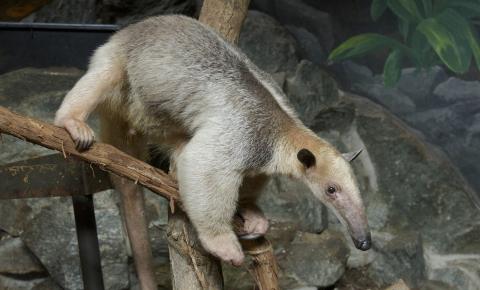
How Long Is a Tamandua’s Tongue? And More Tamandua Facts
Nov. 29 is World Anteater Day. Celebrate by getting to know one of the remarkable members of the anteater family: the tamandua!
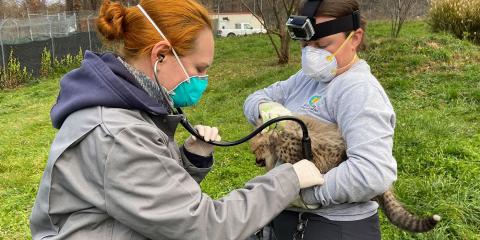
#CheetahCubdate 10: Coughs, Check-ups and Chowing Down
It’s been another busy week for Rosalie and her five cubs, from their first taste of meat to their first veterinary exam.

#CheetahCubdate 9: Spotted on Cam, Bigger than Before
The cheetah cubs are back on the Cheetah Cub Cam! Check out this adorable video and tune into the Cheetah Cub Cam in the evenings for a chance to catch the cubs live.
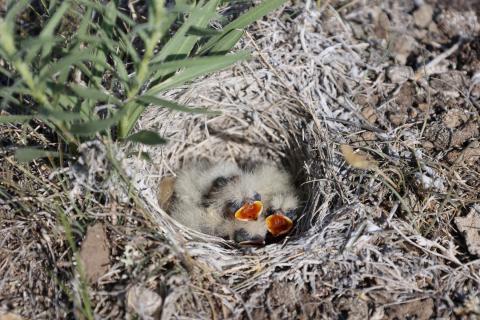
A Rare Look Inside the Nests of Declining Prairie Songbirds
Each spring, the Northern Great Plains erupts with life as migratory birds return to build nests and raise their young. Smithsonian researchers are studying these grassland birds that nets in areas inhabited by prairie dogs.
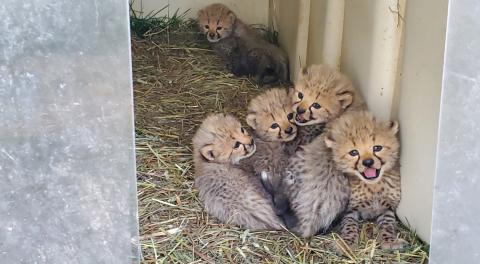
#CheetahCubdate 8: Little Home on the Grasses
Cheetah mom Rosalie and her five cubs continue to do well and live between the den without a webcam and the tall grasses in their yard.
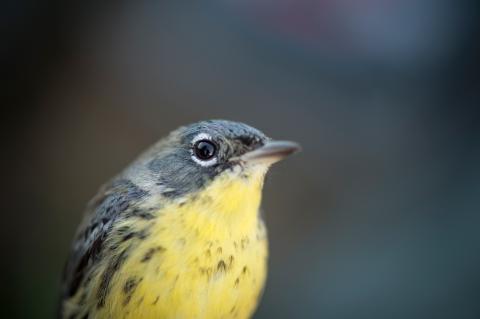
A Day in the Life of a Conservation Biologist in Search of a Rare Songbird’s Nest
In these excerpts from his field journal, Smithsonian Migratory Bird Center intern Haley Haradon transports you to Michigan’s young jack pine forests as he searches for Kirtland’s warbler nests.

Brandie Smith Named Director of the Smithsonian’s National Zoo and Conservation Biology Institute
Brandie Smith has been named the John and Adrienne Mars Director of the Smithsonian’s National Zoo and Conservation Biology Institute, effective Nov. 9. Smith previously served as acting director of the Zoo beginning May 2021.
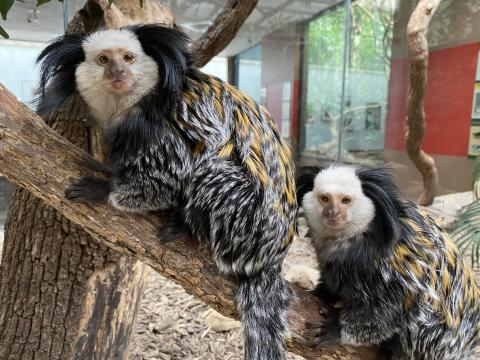
Geoffroy's Marmoset Dies at Smithsonian's National Zoo
On Nov. 3, Small Mammal House keepers said goodbye to our last Geoffroy’s marmoset, Lilo. At 12 years old, she was considered geriatric for her species; typically, Geoffroy’s marmosets in human care live about 7 years.
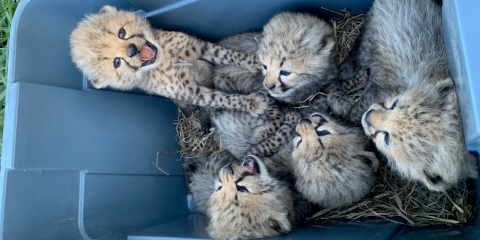
#CheetahCubdate 7: Weekend Adventures and Another New Den
On Saturday, Nov. 6, cheetah mom Rosalie moved her cubs out of the webcam dens and back to the tall grasses in her yard, creating her own natural den. Read on for the full account of the cubs' weekend adventures!
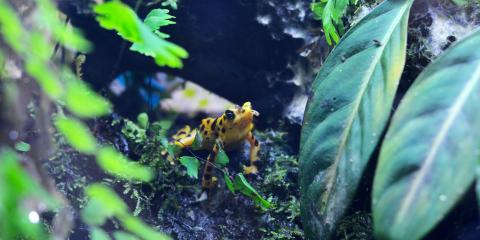
Is a “Living Pharmacy” the Key to Curing Chytrid in Frogs?
For decades, scientists have wondered whether the key to saving frogs from the deadly chytrid fungus lies in their skin. Could they genetically modify bacteria found in the frogs’ mucus layer and boost its antifungal properties, in effect creating a “living pharmacy” on the frogs?
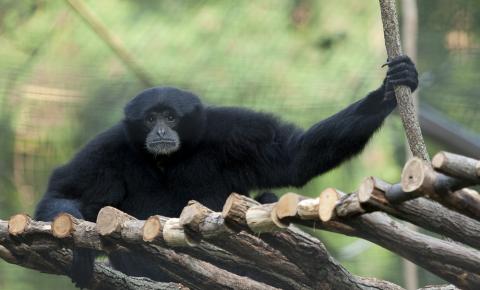
Get To Know Our Gibbons
They’re goofy, sweet and superstars at training — meet Ronnie and Bradley, the Smithsonian’s National Zoo’s siamangs! These apes may be small in stature, but their endearing personalities (and booming calls) make their presence felt far beyond Gibbon Ridge.

How Do You Raise a Loggerhead Shrike?
Meet the loggerhead shrike—a beautiful songbird with a gruesome reputation for impaling its prey on thorns and barbs. More frightening than the “butcher bird’s” hunting habit is the reality that their populations are in steep decline. Since 2005, the Smithsonian Conservation Biology Institute (SCBI)...
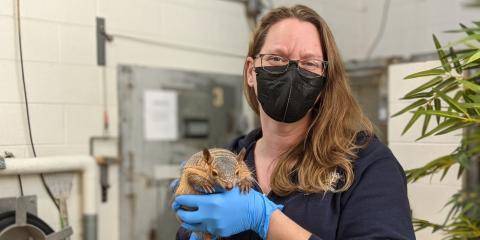
How to Care and Feed Elephants, Sloths and More
Get a taste of the challenges animal nutritionist Erin Kendrick faces as she formulates diets for all animals at the Smithsonian’s National Zoo.
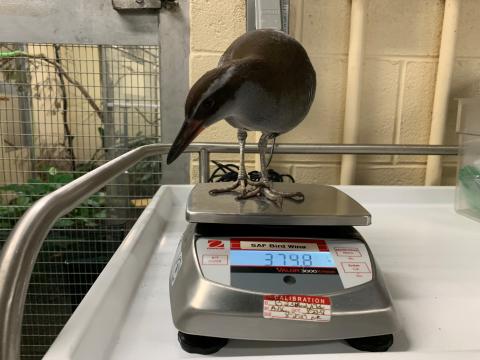
How Do You Weigh Animals at the Zoo?
Keepers can learn a lot about an animal’s needs just by monitoring its weight. But how do you weigh a wiggly ferret or get a full-grown elephant onto a scale? Find out in this update from primate keeper Erin Stromberg.
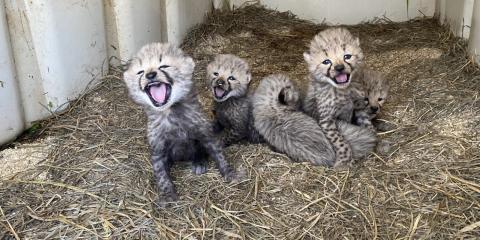
#CheetahCubdate 6: Smile with Your Teeth
Rosalie’s five 3-week-old cubs have us smiling! Over the weekend, keepers did a quick visual check on the cubs and noticed at least one had some teeth. Read on for the full update and watch a sweet moment between mom and cub in this update.
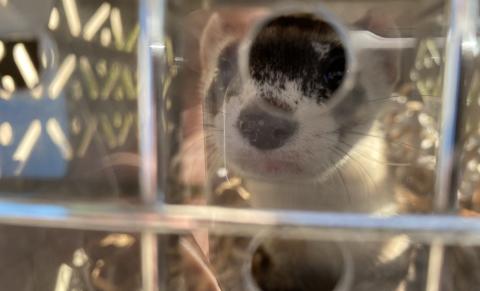
A Fond, Ferret Farewell
Earlier this month, our black-footed ferrets slated for breeding centers and wild release departed Smithsonian’s Conservation Biology Institute. This included Black-footed Ferret Webcam stars Potpie and her three kits. Read on to find out where Aster, Aspen and Swifty ended up!
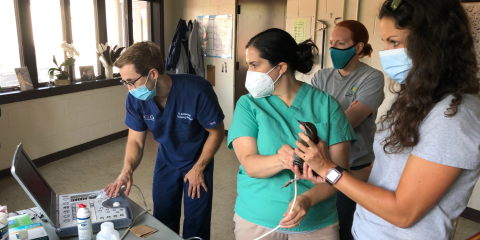
The Heart of the Matter: Cardiac Conditions in Guam Rails
Guam rails are small, speedy ground birds who can only fly three to 10 feet at a time. They are also only the second bird in history – after the California condor – to recover from being extinct in the wild. The Smithsonian’s National Zoo and Conservation Biology Institute is an active participant...
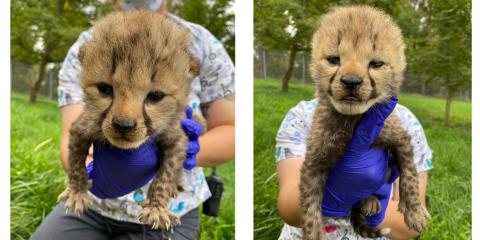
#CheetahCubdate 5: 2 Pounds of Cuteness per Cub
It was a busy week for Rosalie and her five cubs, as they moved back inside an artificial den and are back on the Cheetah Cub Cam. Animal care staff were finally able weigh each cub!

#PandaStory: A Bubble Bath Wrestling Match
It seems that giant panda cub Xiao Qi Ji inherited his mother Mei Xiang’s fondness for the scent of bubble bath. On an autumn day, keepers presented the pair with some suds to play in, and they went wild! Get the latest #PandaStory update from keeper Mariel Lally.
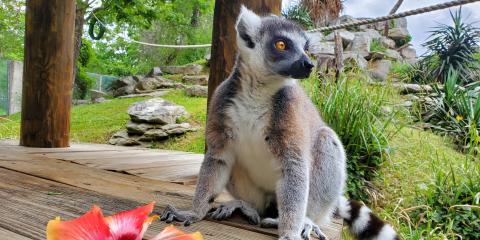
Top Five Reasons to Leap Into World Lemur Day
We’re leaping for joy and celebrating World Lemur Day at Smithsonian’s National Zoo! This special holiday—which takes place the last Friday in October—is the perfect occasion for learning all about our lemur friends.
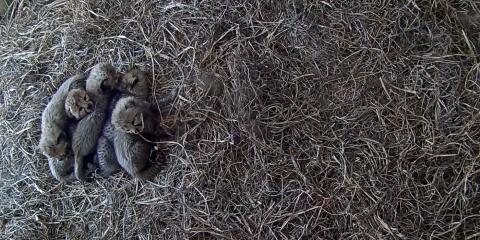
#CheetahCubdate 4: The Cubs Are Back on Cheetah Cam
Cuddle puddles are back! Cheetah mom Rosalie moved her five cubs back into the den with a webcam!
